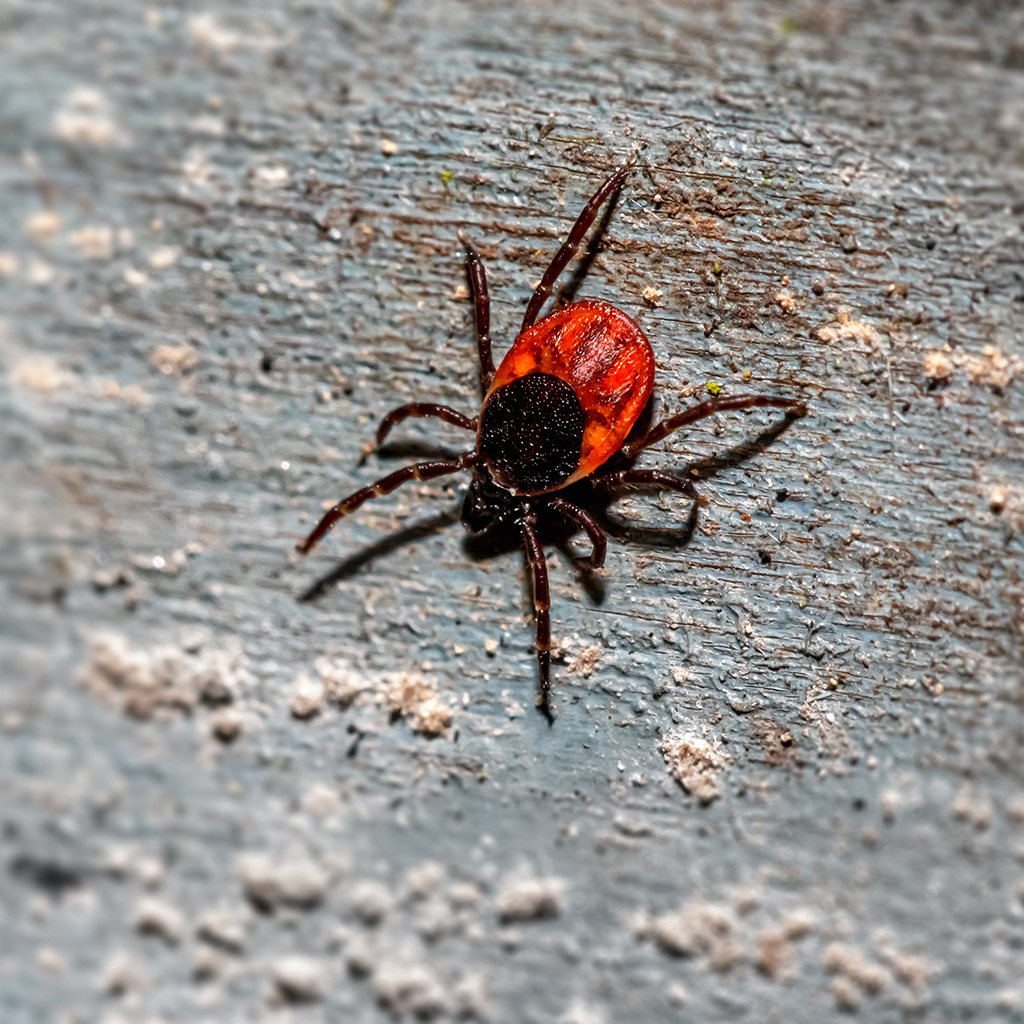


You may be on the lookout for ticks while on a hike in the Coachella Valley, but they are not just an outdoor pest. If you see a tick in your home, chances are good that there are many more living outdoors nearby, especially if you have tall grasses or brush close to your home or business. Because ticks can transmit disease such as Lyme to you and your pets, it’s important to get help from experts who understand how to deal with ticks.
In the Coachella Valley, the most common types of ticks are the lone star tick, the deer tick, and the brown dog tick.
Ticks are very small, and can be smaller than a sunflower seed, though female ticks can grow up to 10 times larger after feeding on blood. Like other arachnids, adult ticks have eight legs. Their bodies are larger than their heads.
Ticks are a common issue in heavily wooded areas, or areas with long grass. Since they feed on human and animal blood, they like to live near food sources like deer, rabbits, birds, squirrels, even you and your pets. They also like humid and moist environments near the ground, such as wood piles, fallen branches, stone walls, overgrown foliage, and grass.
Even though most tick species live outdoors, some prefer to live indoors. The brown dog tick is one example of this type. As the name suggests, it tends to live where dogs are present, such as in homes and kennels.
A female tick can lay thousands of eggs in its lifetime, and its life cycle can last for two to three years. Eggs are typically laid in the spring, either indoors or outdoors. Tick eggs are laid close to food sources such as animals. These eggs are a translucent brown or red in color. Once they hatch in the summer, tick larvae need to eat immediately, and will search for an animal or human to feed on. Then, they detach and hide somewhere warm to continue growing over the winter. Once a tick larva turns into a nymph the following fall or spring, it can begin to seek out larger sources of food such as dogs, deer, and humans. A tick nymph will feed for four or five days on this second host. A tick will grow into full maturity by the fall or winter, and begin searching for its third host. Because infected adult ticks can transmit pathogens to their offspring, tick control is still a concern over the cooler months.
Rudy’s Termite & Pest Control are licensed Coachella Valley tick control experts. Contact us today and let us solve the issue effectively.
Ticks have highly-developed sensory organs and are able to detect a potential host across large distances, and can get to know paths where people or animals often travel. Through a process called “questing,” they lie in wait on tall grass or shrubbery, then grab on when a human or animal passes by.
Their hook-like mouthparts can get become embedded into their host, and improperly removing the tick can leave this front area trapped inside. Because of the high risk of disease transmission, dealing with ticks immediately is crucial.
To help prevent picking up ticks outdoors, wear proper clothing such as tucked in long-sleeved shirts, and pant hems tucked into your socks. Ensure your pets are checked for ticks if they spend time outdoors, and talk to your vet about preventative medication.
While tick infestations indoors are rare, they are cause for concern – ticks can transmit diseases such as Lyme and Rocky Mountain Spotted Fever. They feed on the blood of humans and animals.
Ticks can quickly become a problem in your home and on your property, so if you think you may have an infestation, call Rudy’s Termite & Pest Control right away. We’ll get your home back to normal quickly, and can advise you on how to keep ticks away for good.
"*" indicates required fields

Rudy’s has won the Community Choice Awards / Best of Desert multiple times — and we’re looking to do it again! Thank you in advance for your daily vote.